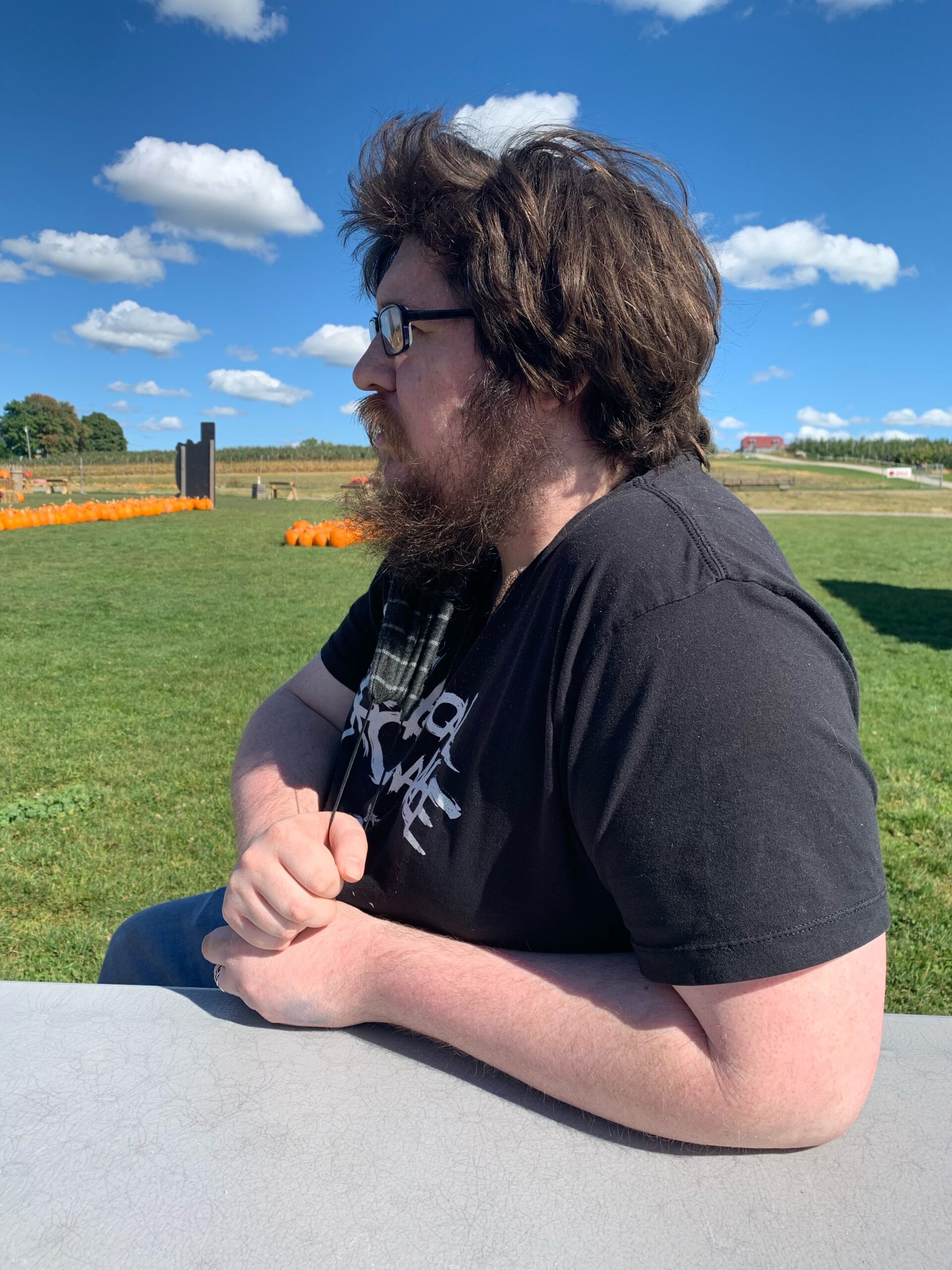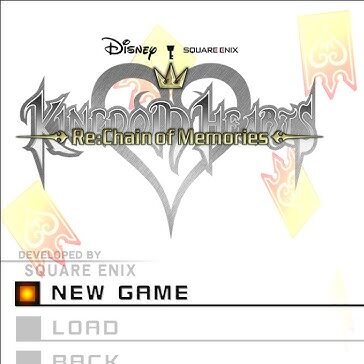Hello, and welcome back to Retro-Spective, a new series on Card Gamer where we look back at older card-game-based video games and review how they play! When last we left off, we reviewed the Pokémon Trading Card Game for Game Boy Color. Today, we’re looking at Kingdom Hearts: Re:Chain of Memories, a game for the PlayStation 2 console. Kingdom Hearts: Re:Chain of Memories is a 2007 port of 2004’s Kingdom Hearts: Chain of Memories for the Game Boy Advance handheld system. It was released in 2007 as part of Kingdom Hearts 2: Final Mix+ in Japan, but was released standalone in North America in 2008. We’re playing it to review via the Kingdom Hearts All-In-One Collection for the PlayStation 4 console. How does it play as a card-based beat ’em up? And how does it hold up to today’s sensibilities? Let’s take a look!
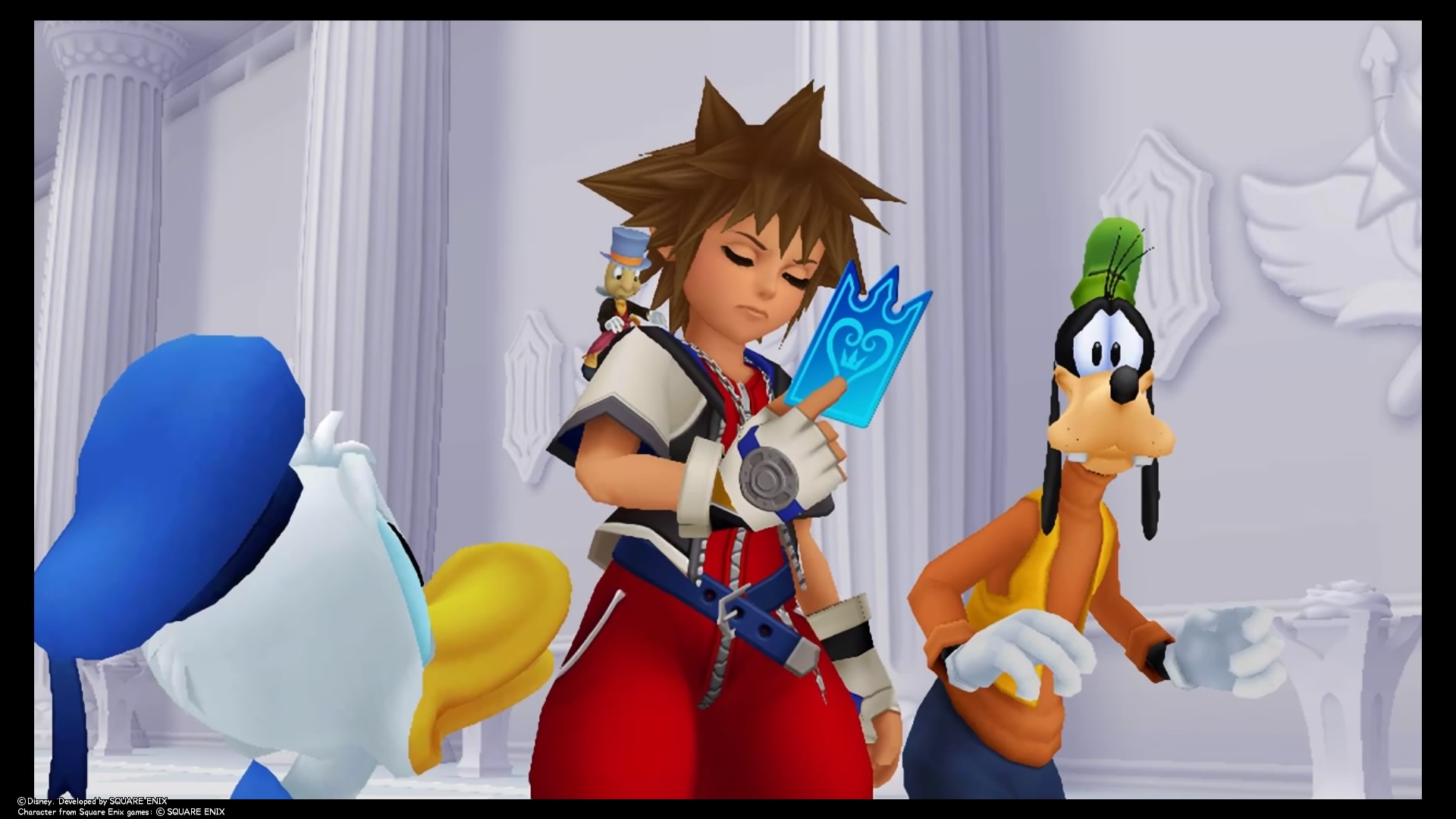
Table of Contents
ToggleA House of Cards
This game, following the original Kingdom Hearts title, sees protagonist Sora and his friends Donald Duck and Goofy faced with a mysterious organization known as Organization XIII. The events of Chain of Memories take place in a spooky, pristinely white castle called Castle Oblivion. Beyond the existence of the characters mentioned (including the Organization) and of Castle Oblivion itself, the generation of cards dictates legitimately everything in the game.
This is no hyperbole; everything is in a card form in this game. This includes the generation of worlds on different floors of the castle, rooms within the world floors, and, naturally, combat.
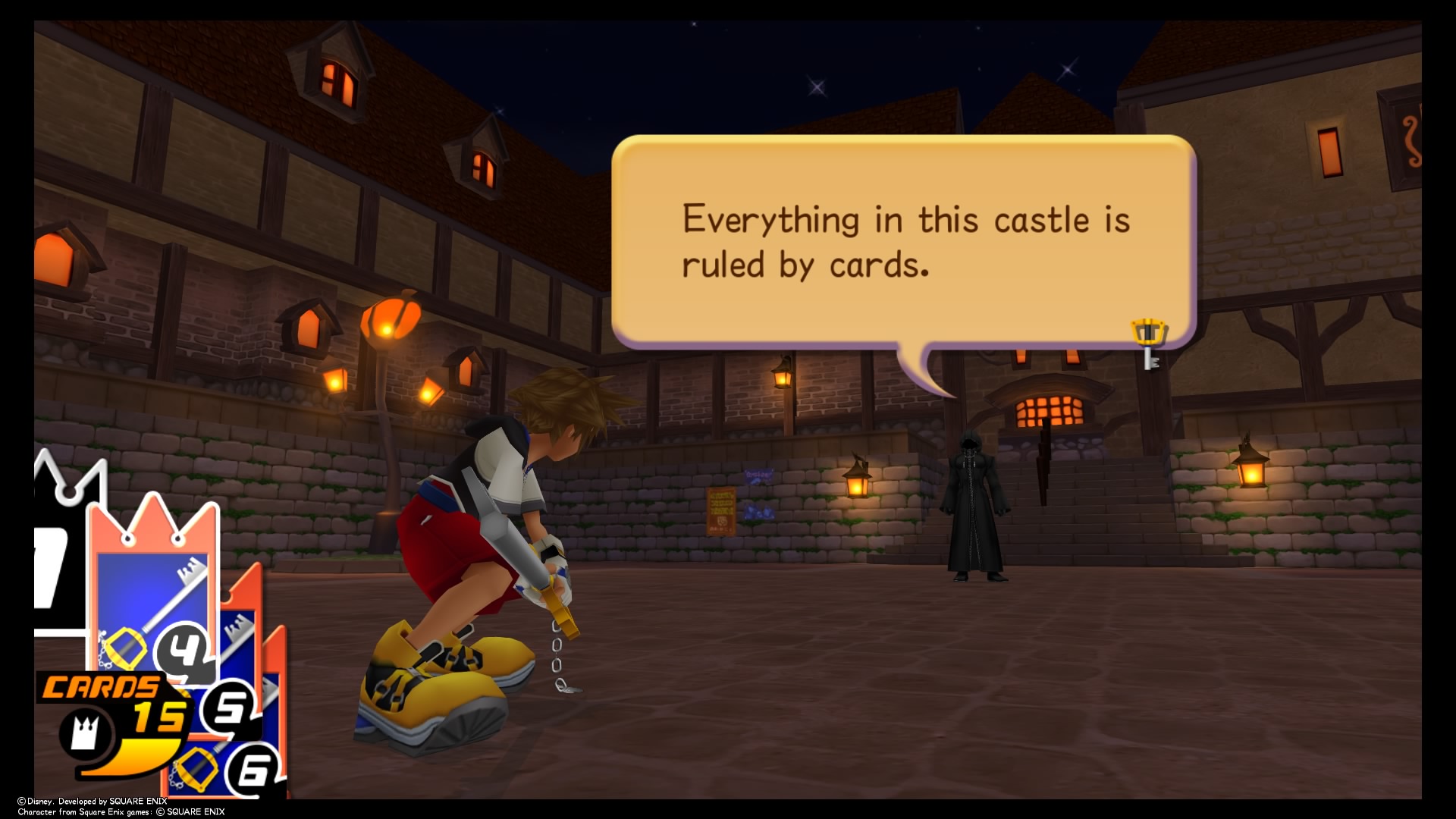
Combat Readiness
You’ll notice when looking at the bottom-left-hand side of the previous image that there are a bunch of crown-shaped cards with the image of Sora’s primary weapon, the Keyblade, on them, marked with numbers in the corners. These cards are for combat. In Kingdom Hearts: Re:Chain of Memories, there are four types of cards, each divided into various individual cards. Each card except for one has a numerical value. This value represents its efficacy in battle. However, it doesn’t represent its battle-effectiveness, but merely its capability in the card aspects of the game.
This game relies on the numerical values in a system not unlike the classic playing-card game War. If you have a card of, for example, a value of six currently being used, an opponent can then use a card of value seven or higher to “break” it, rendering it inert. Value zero cards break anything, but are broken by anything in turn, so timing can be key here (Get it? Key?). Furthermore, cards stacked in combat become “Sleights,” a means to make cards stronger and much harder to break.
When Sora runs out of usable cards, he can recycle his deck. However, that typically takes time and leaves Sora open to attack from enemies.
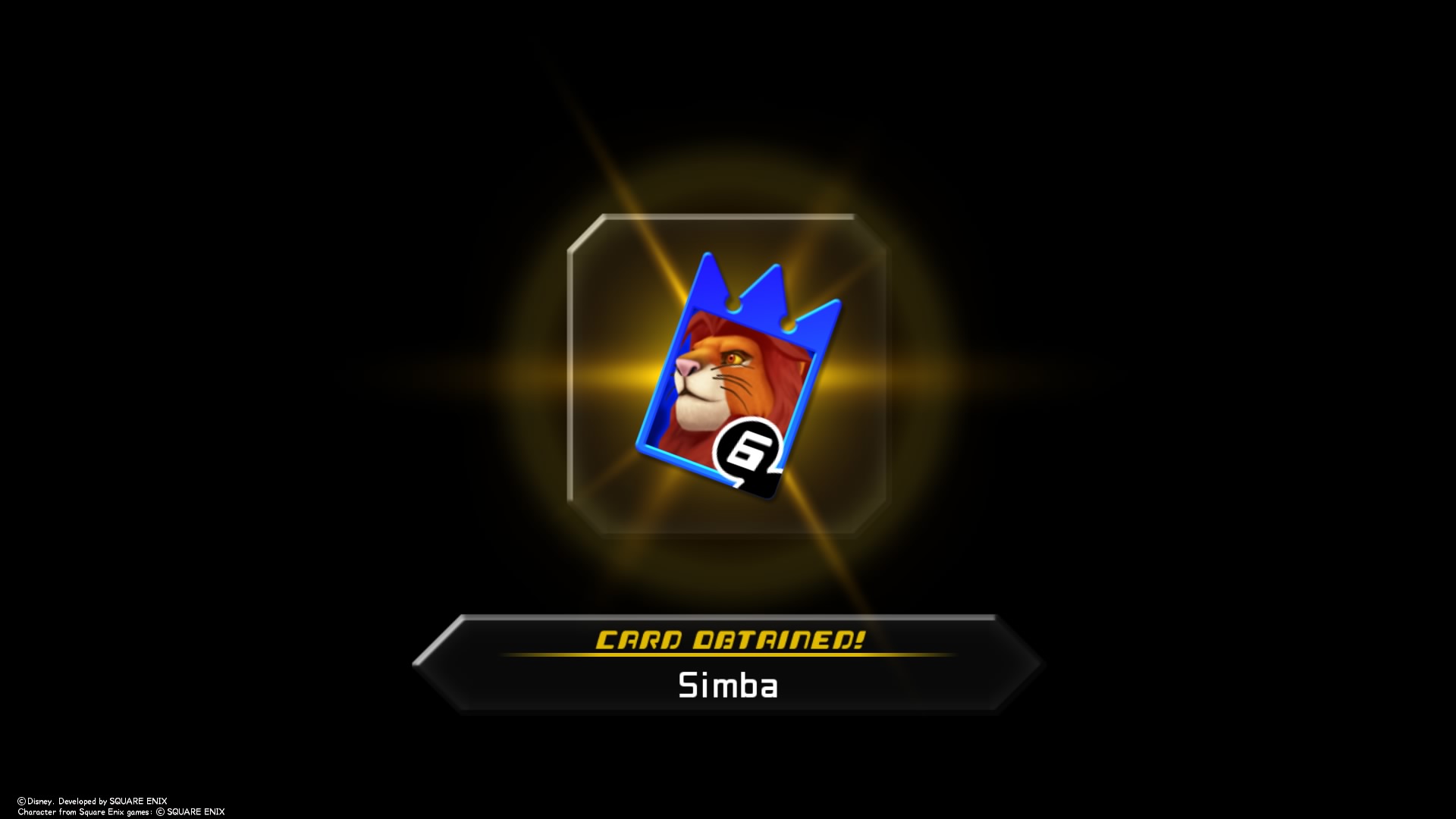
Types of Cards in Kingdom Hearts: Re:Chain of Memories
In the game, there are three kinds of cards. Here is a list of their general uses and capacities:
- World Cards: These cards are used to generate the world setting of the floor you’re on in the game. There are thirteen worlds in the game and most of them come from the original Kingdom Hearts game. A couple of them, including Castle Oblivion itself, debuted in the original Chain of Memories game.
- Room Cards: World floors are divided into rooms. Whenever you aim to leave a room for another, you need to use a Room card. Whenever you win in a random combat scenario you gain one Room card. There are four types of Room cards:
- Red: These rooms have Heartless, the minion enemies of the series, in them. Generally, individual cards in this type dictate the type of dangers you’ll face. This can range from many Heartless in one room to all of the Heartless stunned and sleeping, or even a pitch-black room where visibility is greatly impacted during combat.
- Green: These rooms also have Heartless within them, but usually these rooms also give Sora an advantage in combat. This can vary from Attack cards being powered up to a room where you get your choice of Room card for winning in combat.
- Blue: These rooms do not contain Heartless, but can range from impromptu save points to treasures. There is even a shop option containing Moogles, lovable little creatures from the Final Fantasy series!
- Gold: These rooms dictate story beats most of the time. There are only four types of Gold Room cards. To progress the game, you need three of these types of cards. The fourth can lead to a major reward but is extremely hard to come by as it’s a card only obtained randomly and with an abysmally low drop rate.
- Combat Cards: There are four subdivisions of combat-usable cards. Each is necessary for Sora to defeat his enemies in the various rooms in Castle Oblivion. They are as follows:
- Attack Cards: These red combat cards are your bread and butter in battle. They represent Sora’s many Keyblade weapon styles. They’re all ranked by an ambiguous letter grade. Attack cards can become sleights by Sora learning them via level-up.
- Magic Cards: These blue combat cards represent the various spells Sora has learned in his travels. They range anywhere from a standard spell like Cure or Blizzard, all the way to summons like Simba or Cloud (of Final Fantasy VII fame). Sleights within this group are already available once Sora gains his first copy of a given Magic card. For example, stacking three Cure cards will produce Curaga, a massive healing spell.
- Item Cards: These green cards represent Sora using an item or calling upon an ally in battle, like Donald or Goofy for example. Item cards do not replenish in battle when Sora recycles his deck, but they have various immediate effects.
- Enemy Cards: Occasionally, enemies will not drop a Room card, but something else altogether. These are Enemy cards, framed in black. These cards are usable one at a time and have an effect that lasts for an extended duration during battle. Sora uses Enemy cards in a separate user interface in battle. Enemy cards do not have a numerical value.
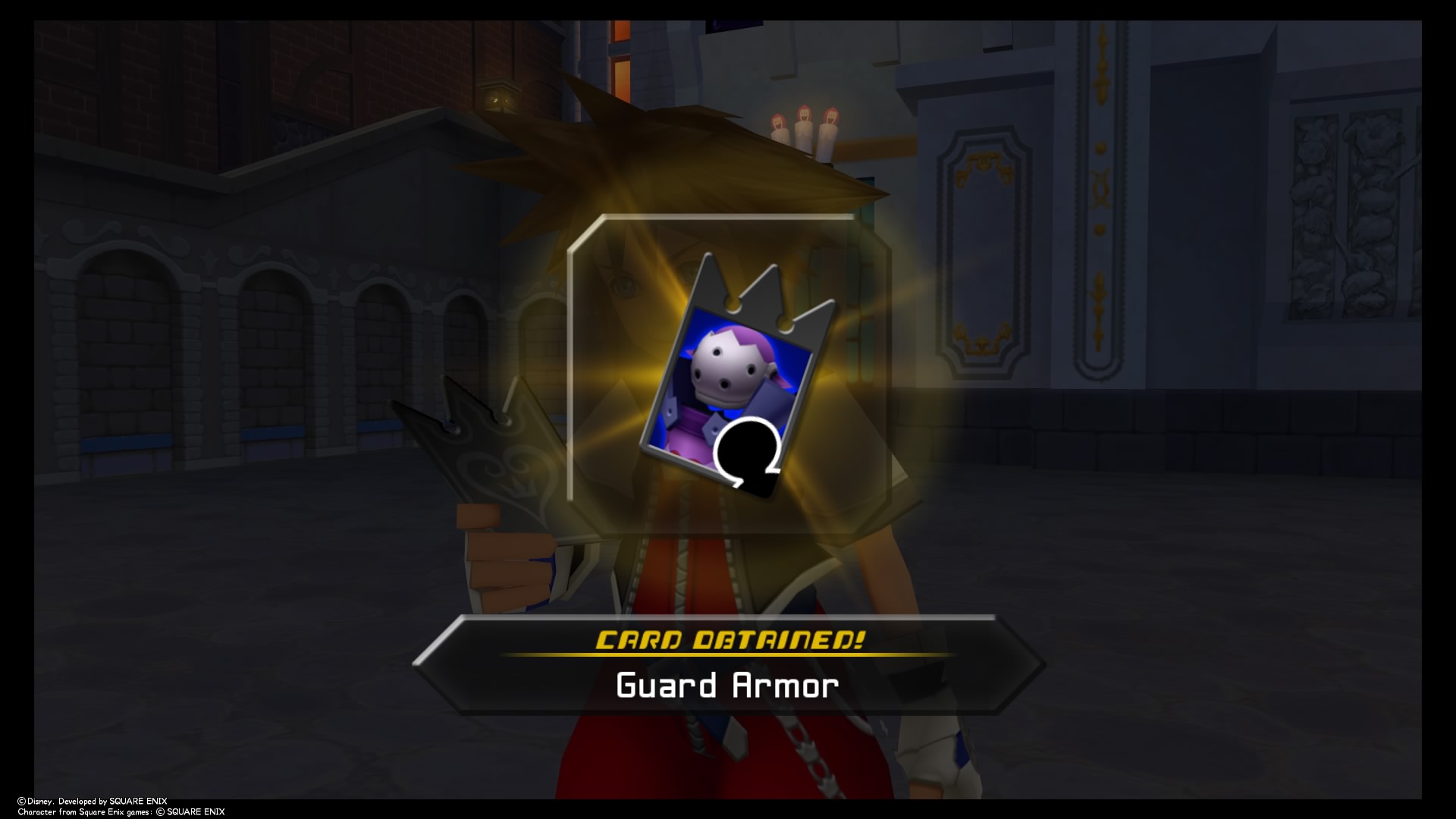
Deckbuilding
When you build a deck of cards in Kingdom Hearts: Re:Chain of Memories, you have upwards of 99 slots to fill. Your deck won’t start with much to work with, however. You have a minimum of one card needed for a deck, but even with, say, 18-21 cards, you will find you need to recycle cards more and more. This is also very true if you plan to utilize Sleights because these render the first card therein as unable to cycle back. That means the more Sleights you use, the fewer cards you have in your deck later on.
Therefore, a good goal is to have between 30-40 cards in your deck. However, with this in mind, you have a strict limit on how many cards you can add.
Each card has a card point (or CP) value, and decks must adhere to a limit on CP. As Sora levels up, he has the option of gaining hit points, CP, or a new sleight, but I’ve found in my experience that CP is the most useful bonus in the early game.
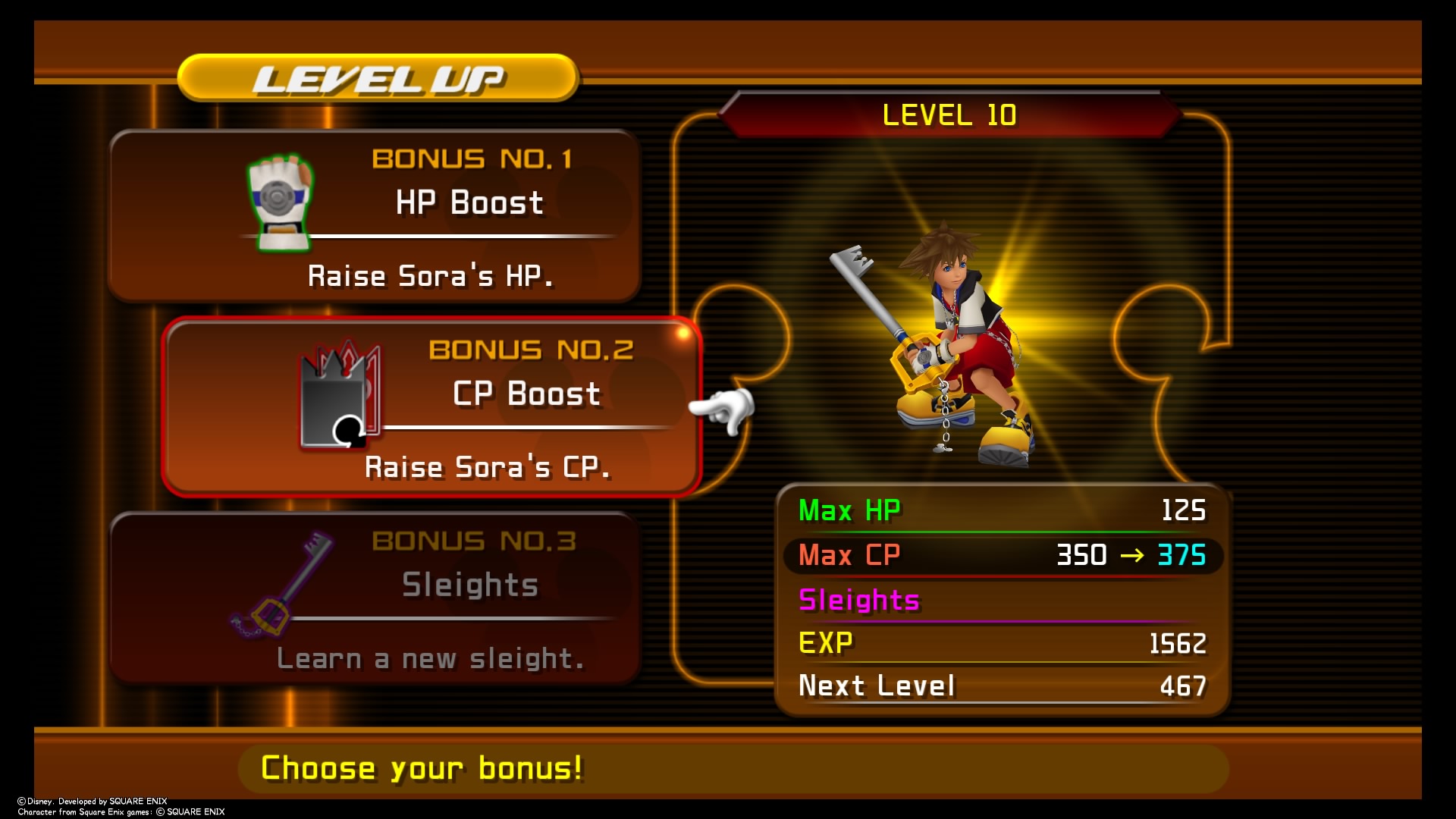
Gameplay Review of Kingdom Hearts: Re:Chain of Memories
While its predecessor for the Game Boy Advance was a masterclass in the field of card-based action RPG gameplay, this game is… tedious and slow, at best. Many fans of the Kingdom Hearts series at large tend to recommend skipping Re:Chain of Memories and simply browsing YouTube for the necessary story beats. This is for good reason. Within the action-packed strategy of this game, there is little room to improvise a new strategy on the fly, and with cards breaking left and right, even on early floors like Wonderland, it’s difficult to gauge what you’re doing correctly and what is going horribly wrong.
However, I think as a story chapter for Kingdom Hearts, on the whole, this game can’t be skipped. It establishes the Organization and its devious machinations while explaining why Kingdom Hearts II doesn’t begin with Sora. It’s relevant and necessary. Plus, the collectible nature of this game, frankly, scratches the itch of many different types of card gamers. It’s got its flaws, but it’s not irredeemable.
In the end, Kingdom Hearts: Re:Chain of Memories doesn’t quite live up to the original Game Boy Advance game, but if we brush aside comparison we can find that the game was an interesting, if formulaic, play. If you have the game, be it in a collection or standalone, it’s worth giving it some play time. Otherwise, maybe you are better off checking the story out on YouTube.

